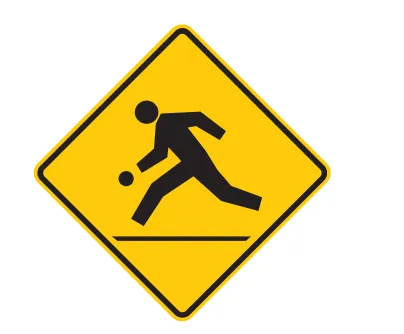Speed Limits and Control
- 1/24The maximum speed limit on a provincial highway outside of cities and towns for regular vehicles
The maximum speed limit on a provincial highway situated outside a muncipality area is 90 km/h. Drivers must always be attentive to specific road signs which may indicate a different speed limit for particular sections.
The maximum speed limit on for trucks outside of cities and towns
A provincial highway located within a municipality limits typically has an 80 km/h maximum speed limit. It is crucial for drivers to observe all signage, as local conditions might require a different posted speed.
The conditions under which a driving speed is considered illegal.
A speed is considered illegal if it is unsafe given the prevailing road, weather, or traffic conditions, even if it is below the posted limit. Drivers must always prioritize safety over reaching the maximum allowed speed.
The standard speed limit for both urban and rural school zones, if no other speed is posted.
For both urban and rural school zones, there will be a posted speed limit. If there is no sign posted, you must drive at a reasonable and prudent speed.
The standard speed limit for both urban and rural playground zones when the times are in effect, unless otherwise posted
For both urban and rural playground zones, there will be a posted speed limit. If there is no sign posted, you must drive at a reasonable and prudent speed. This ensures children safety during periods when they are most likely to be present and active.

A playground sign, even without an explicit speed limit posted, serves as a crucial warning. It alerts drivers to the potential presence of children, requiring them to use increased caution and awareness while driving through the area.
The requirement for obeying speed limits in construction zones.
Speed limits within construction zones are mandatory at all times, including periods when no workers or equipment are actively present on site. This is because hazards like uneven surfaces or loose materials may still exist.
Types of hazards that might still be present in construction zones even when no workers or equipment are working.
Even without active construction, zones can still present significant hazards. Drivers should be aware of dangers such as bumps, fresh oil, and loose gravel on the roadway, which require reduced speeds.
The consequence for fines in construction zones if workers are present.
When workers are actively present in a construction zone, any fines incurred for traffic violations in that area will be subject to a doubling penalty. This measure emphasizes the heightened risk to personnel.
If you see a flag person in a construction zone.
Drivers operating a vehicle in a construction zone are legally required to comply with all signals provided by a flag person. Failing to do so can create extreme danger for workers and other road users.
When driving in a construction zone, be prepared to
In a construction zone, drivers must always be prepared to reduce their speed and come to a complete stop if the situation demands it, due to changing conditions or worker presence.
If you are exceeding the speed limit when passing another vehicle.
It is against the law to increase your speed beyond the posted limit specifically for the purpose of passing another vehicle. All overtaking maneuvers must be completed within the legal speed limits.
The maximum speed limit for drivers of long combination vehicles.
Long combination vehicles must adhere to a maximum speed limit that is either 90 km/h or the road posted speed limit, whichever of these two values is the lower. This ensures added safety due to their size.
The typical speed limit in Nunavut within built-up areas.
The standard speed limit within urban areas in Nunavut is set at 50 km/h, which corresponds to approximately 31 mph. Drivers must adhere to this limit unless otherwise posted.
The significant risk posed by unsafe driving and exceeding speed limits to road users.
Engaging in unsafe driving practices or exceeding posted speed limits significantly heightens the overall risk of being involved in a road accident.
The maximum speed limit on outside a built-up area, unless otherwise posted.
On a road situated outside an built-up area, the maximum speed limit is generally 80 km/h. Drivers should always adhere to any specific posted signage.
If you are driving below the approved speed limit.
Driving significantly below the approved speed limit can lead to confusion for other drivers and potentially create a dangerous road hazard by disrupting traffic flow.
If you are approaching an emergency vehicle.
Drivers should adjust their speed and be prepared to move over or slow down as an emergency vehicle approaches, ensuring a safe path and reducing confusion.
The consequence for exceeding the speed limit in construction zones when workers are present.
If workers are present in a construction zone, fines for exceeding the speed limit are specifically doubled to emphasize the increased danger to personnel.
When you see a slow-moving vehicle sign on a vehicle ahead
When you see a slow-moving vehicle sign, you should slow down. These vehicles move at speeds under 40 km/h, so it is important to approach with caution.
The basic speed limit outside cities and towns for regular vehicles is
The basic speed limit for regular vehicles outside cities and towns is 90 km/h, day or night, unless otherwise posted.
The basic speed limit outside cities and towns for trucks is
Trucks are limited to 80 km/h outside cities and towns at all times due to safety and handling considerations.
The basic speed limit in cities and towns is
In urban areas, the default speed limit is 50 km/h unless a different limit is posted, often in school zones or high-traffic areas.
The speed limit in modified speed zones near or in cities and towns is
Modified speed zones, typically found on arterial roads or approaching highway intersections, have speed limits between 50 km/h and 90 km/h to manage higher traffic volumes safely.







